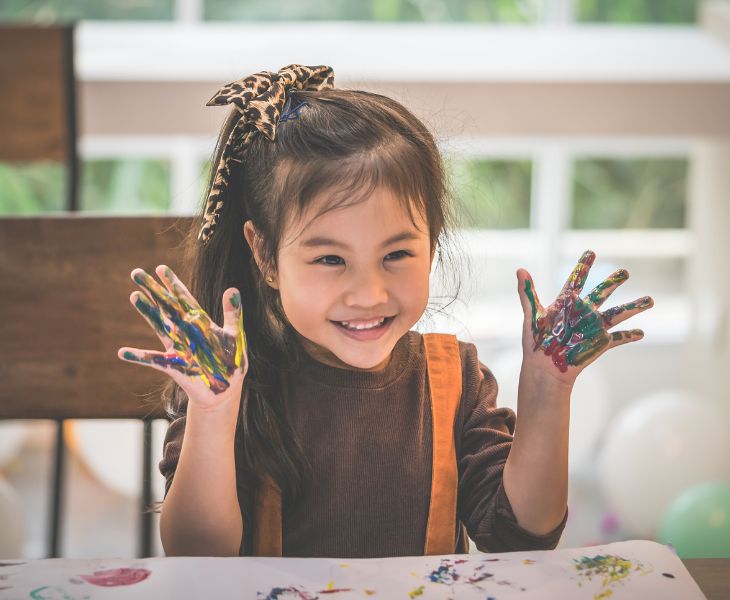As teachers complain of an increasingly packed curriculum, it can seem difficult to find time to prioritise the arts. After all, it is literacy and numeracy results—easy to quantify—that get the greatest scrutiny from governments and parents. Despite this situation, it’s not hard to find evidence of the advantages of artistic exploration within the classroom.
Benefits of art in the classroom
Artistic results are not easy to measure or package, but they can provide a space in which we can examine some of the bigger questions about how we relate to others and what we want our society and the wider world to look like.
In what feels like an increasingly polarised world, students can engage with philosophy, ethics, and consider different points of view. This point is backed up by researchers from the University of Illinois, who found that engaging in an artistic pursuit, or simply admiring work others have created or performed, correlates with higher levels of civic engagement and tolerance for others around us, which is something that can be carried through our entire lives.
On a more immediate scale, we can see that engaging with the arts can invite intense concentration and a state of flow, where time passes effortlessly. This is linked with lower stress and improved memory.
Then there is the fact that in an environment where students heavily rely on screens inside and outside the classroom, the physical act of writing, drawing, painting, manipulating objects or playing musical instruments can help with the development and refinement of coordination and fine motor skills.
Barriers to quality art education
Although we have pinpointed some clear advantages, there are some common barriers that prevent regular classroom teachers from introducing art in the right way.
- Lack of teacher confidence – If not having specialised in the arts, teachers can lack confidence in their own abilities to “competently” model work. In addition, they may not want to expose their personal thoughts or display the passion required to truly engage with art for fear of losing their position of authority. In this case, the results may be a stilted, by-the-numbers lesson that fails to capture anyone’s imagination.
- Lack of funds – The perennial problem for schools—especially those in the public sphere—is not having the resources to run a music or art class properly. Unfortunately, budget cuts often means that subjects that aren’t seen to have a direct impact on academic achievement feel the pinch.
- Unsupportive learning environment – Individual teachers can feel that they have less scope for exploring the arts if the school leadership and other teachers are unsupportive or disinterested.
- Preparation difficulties – Crushed under the weight of planning, the physical demands of teaching, and administrative tasks, it can be much more appealing to photocopy a worksheet than create and set up a dynamic and interesting art lesson.
Bringing art to your class – how to do it
While some of the difficulties above are rooted in external factors, with the right motivation and some creativity, teachers can still create a positive environment for students’ engagement with art and its principles.
- Be a positive role model – Despite the increasing autonomy being given to students, the teacher is still the boss, setting the tone for the classroom. Openness and a positive attitude go a long way, even if you’re not an artistic genius.
- Incorporate art often – Setting art lessons for after lunch on a Friday afternoon sends a clear signal as to how you see its importance. Setting time aside for art frequently, even in small bursts, shows that you see it as a priority
- Explore cross-curriculum capabilities – In a cluttered curriculum, incorporating elements of different disciplines into one lesson is encouraged, allowing teachers to do more with the same amount of time. Incorporating art into other subjects can both bolster its importance in the eyes of students and parents while generating greater interest.
- Create a non-judgemental environment – Art and music is about expression, which is precisely why it can play a powerful role in bringing students together; however, creating a space where students feel free to expose their inner thoughts is key to this success.
No matter the idea you have, COS has got you covered with creative ideas and the right supplies.
Check out our other COSpedia articles for some easy-to-make crafts.
Popstick Mother’s day craft ideas for children
Zero-waste craft activities for kids
For our complete range of affordable and eco-friendly art and craft supplies, feel free to contact our Customer Service team on 1300 79 27 85 or email education@cos.net.au.

